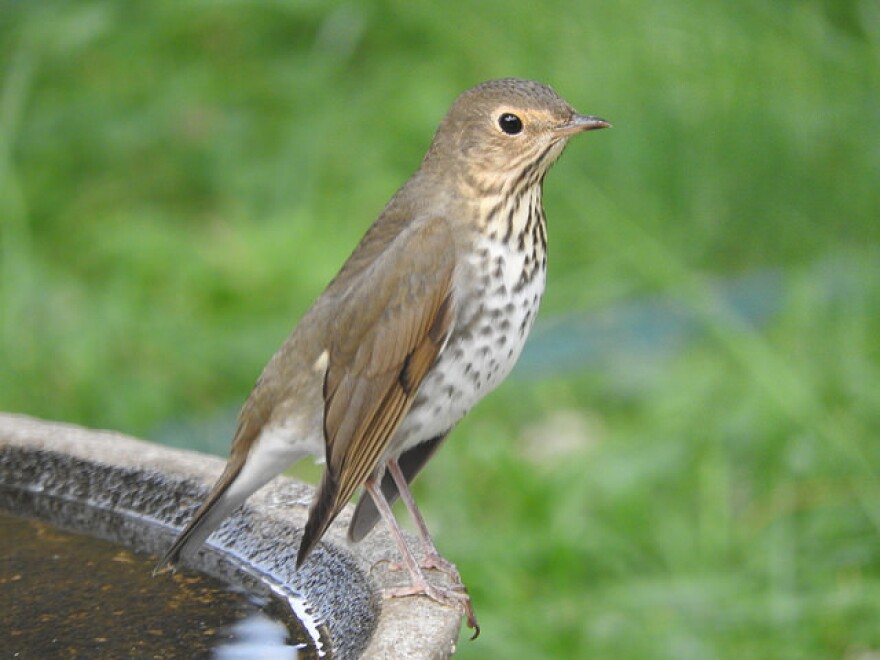Unfortunately, passing the Equinox, doesn't flip a switch on the weather. While we may be ready for spring temperatures and mild breezes, this week's winds and cold are a reminder that winter will not "go quietly into that good night." While it may not feel like spring, take solace from the fact that heading back to New Hampshire from the tropics, right now, are some of the most melodious songsters that we have: the woodland thrushes.
Turdidae is the Latin classification for the Thrush family, which includes robins and bluebirds. But today we'll focus on three branches of that family tree that spend a lot of time in the forest. We'll also go over their calls because unlike their more brightly-plumed cousins, robin and bluebird, you might not see these thrush. They are camouflaged to blend in with the sun-dappled forest floor and you'll probably hear them before you see them.

The Veery's call is one that will stop you in your tracks. The distinctive sound seems to be played through a hollow metal pipe, but it's actually because the Veery has a double voice box and can sing two notes at the same time.

The next on our list is the Hermit Thrush. The give away is that first strong note of its song, a hermit starts loud then trails off downward almost in an echo of itself.

The song of the Swainson’s Thrush is one that is less familiar to most of us, but listen for that ascending melody to help identify the Swainson.
If you don't have your phone with you to look up bird songs (on All About Birds), you can also identify the thrush song in question by observing what sort of forest forest you find yourself in. Veerys prefer valleys, nesting in rich hardwood stands. While Swainson’s are more often found in higher elevations among the evergreens. And the Hermit thrush sits halfway between the two, hanging out mostly in middle elevation dry forests with no particular preference for pines or hard woods.
But they all rely on forests of some kind, so in some places in the northeast, where forest cover is diminished, thrush numbers are down. Places like Cape Cod, New Jersey, and suburban Connecticut are experiencing forest fragmentation, which leaves less habitat for our thrushes - a problem they're also facing in their wintering grounds. The forest fragments that are around are smaller and closer to human development, which leaves the ground-nesting thrushes (Hermit and Veery) especially susceptible to domestic cats.
As their plumage suggests, they are adept at camouflage; so although they are "ground-nesters," they do make great efforts to keep their nests hidden.You could be staring at the base of the tree, recently evacuated by the adult thrush, and not see the nest it is trying to draw your attention from. Thrush often tuck their nests under jutting rocks or roots to protect those pastel bluish-green eggs from the elements.
So keep an ear out and you’ll know when spring arrives.
Thanks to the Cornell Ornithology Lab for use of their bird song recordings on this page. Check out their page for all you ever wanted to know about nearly every bird.







